
Paleohora is a little town on the south coast of the western end of Crete. It’s an expanding resort town with plenty of tavernas and cafes, but still small and quiet compared to the established resorts. Especially quiet in April, which is really before the tourist season starts in earnest. The town sits on a little headland with the ruins of (Venetian?) castle on the end. Immediately behind the town is the start of the mountains, all rocky scrubby stuff, and to one side there’s a little river valley with olive groves and trees and things, which goes down to form a little reed-lined pool. So there’s a range of habitats present and it’s well-placed to pick up migrant birds. This is a shot of the town looking back from the castle site; I haven’t got a picture of the castle because it’s just a few wall-bases and really not picturesque at all.
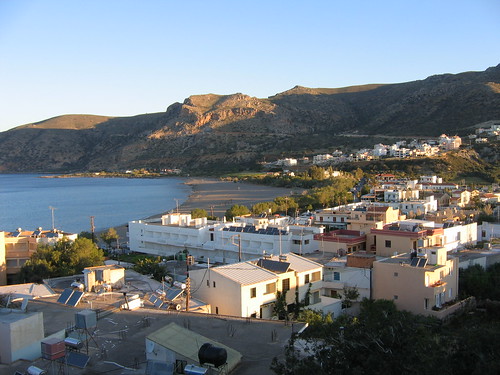
My best birds here were Common Quail—a species that is relatively common across Europe but very difficult to see—and, especially, European Roller, a great big blue thing I’ve wanted to see for years and is even a rarity for Crete. Oh, and a whole flock of eight Golden Orioles, spectacular yellow birds that are normally shy and reclusive, but which I had a good view of as the flew one by one across the olive groves. But I don’t have any bird pictures from here; I didn’t feel like carrying my telescope around. So here’s my bird list for April 22nd-25th with interspersed photos of the area just for local colour.
Squacco Heron
Purple Heron
Little Egret
Common Buzzard
Peregrine Falcon
Common Kestrel
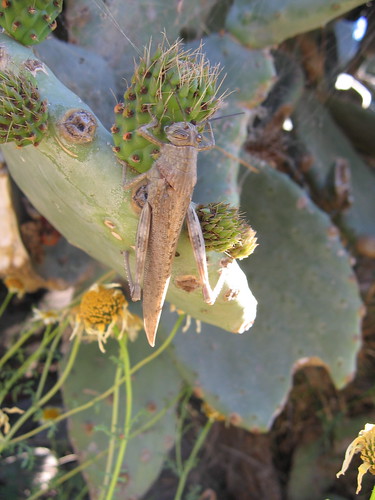
A big grasshopper/locust thing perched on a prickly pear. Prickly pear is an introduced species; from Mexico, I think? that’s fairly common in various places around the Med.
Common Quail
Common Sandpiper
Yellow-legged Gull
Collared Dove
Turtle Dove
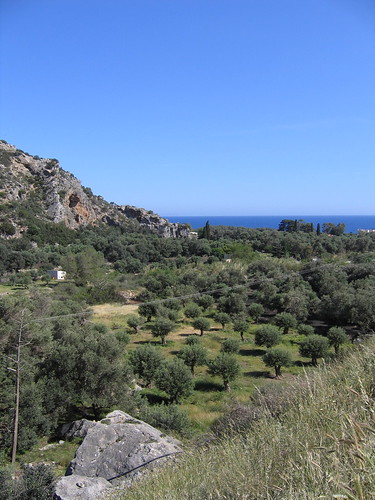
This is part of the river valley from up on the hill. You can see olive groves, obviously; the common tree tended to be some species of plane.
European Scops Owl (heard)
Common Swift
European Roller
European Bee-eater
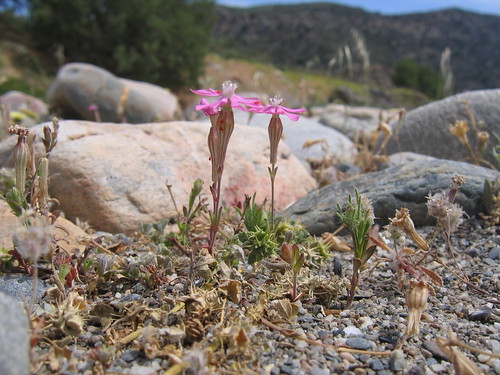
I’m pretty sure that’s some species of Silene, but I don’t know which one.
Crested Lark
Barn Swallow
Red-rumped Swallow
House Martin
Sand Martin
Tree Pipit
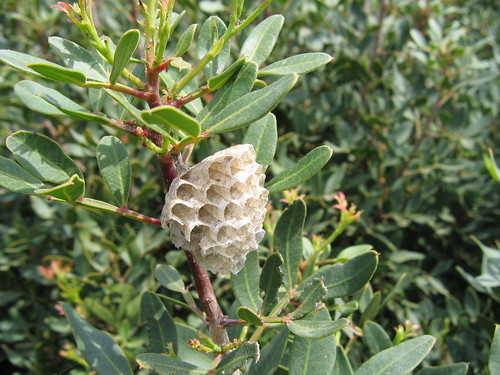
An empty wasp nest on what I think might be myrtle. Taken down on the beach.
Common Blackbird
Sardinian Warbler
Common Whitethroat
Blackcap
Garden Warbler
Wood Warbler
Cetti’s Warbler
Great Reed Warbler
Sedge Warbler

A shot of the shingle beach. There’s a sandy beach on the other side of the headland, but it seemed less productive for birdwatching so I didn’t go there much.
Spotted Flycatcher
Whinchat
Common Redstart
Common Nightingale
Blue Rock-Thrush
Great Tit
Blue Tit
Woodchat Shrike
Hooded Crow
Golden Oriole

Waves breaking on the rocks.
House Sparrow
Spanish Sparrow
European Goldfinch
European Greenfinch
Chaffinch
European Serin
That barn owl bio blitz button is derived from a photo on Flickr by Nick Lawes used under a by-nc-sa licence; the button is therefore available under the same licence. Not that there’s anything wrong with the Jennifer’s BBB buttons, but I wanted something to match my colour scheme.








